My evenings lately have recently taken on a new job – creating a website for my kids’ Cub Scout Pack. I volunteered to be the pack’s web developer. In this blog post, I’ll share how I decided to organize the content for the Cub Scout Pack website using WordPress. We’ll focus on achieving four key functionalities:
- A Pack Updates section: Here, current members of the pack can find information on recent events, fundraiser results, meeting cancellations, and more.
- A blog for Den Leader resources: Here, Den Leaders can access valuable resources, share ideas, and stay informed about pack happenings.
- A secure section for leader information: This section, accessible only by authorized users, will house important leader-specific information.
- A comprehensive FAQ page: This section aims to answer the many questions new parents have when joining the pack.
Throughout this process, I’ll not only explain the “how” but also delve into the decision-making process behind each step.
How I Organize WordPress Content for the Cub Scout Website
Pack Updates (Optional)
The purpose of this section would be to provide a dedicated space for updates relevant to all the families in the pack. Imagine results from the pinewood derby, announcements about upcoming camping trips, or even cancellations due to inclement weather.
We could achieve this functionality by establishing a blog category titled “Pack Updates.” The only limitation I can really imagine is using the actual names and photos of the kids. For that, we may need some sort of permission system. However, the final decision on including this section rests with the pack leadership team. We’ll see if it makes the final cut.
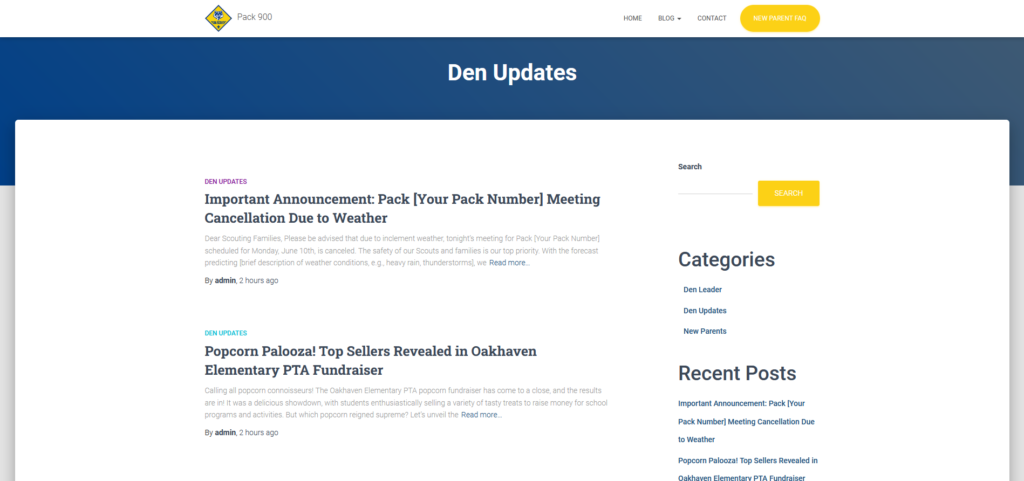
Den Leader Resources
Next on the agenda: the Den Leader section. These volunteers are the backbone of Cub Scouts, leading the dens and keeping the Cub Scouts engaged and excited. My goal here was to create a space where Den Leaders could post valuable resources and share ideas with each other.
This section’s implementation is the same as the Pack Updates. I opted to create a standard WordPress blog and designated a specific category for “Den Leader Resources.” This way, Den Leaders can easily find all the relevant posts in a centralized location.
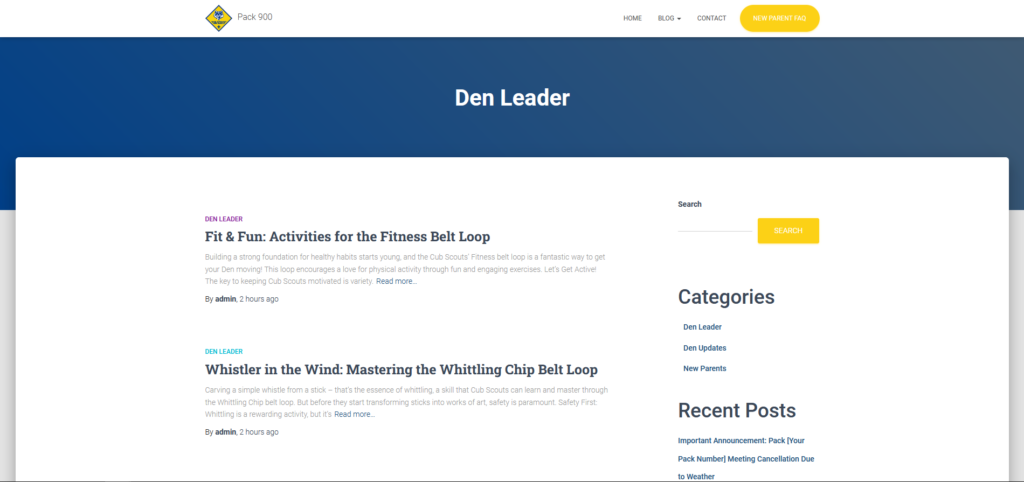
Truthfully, I’m not as familiar with the Cub Scout handbook. I’m unsure if the material if fairly rigid or if each Den is allowed to adapt the requirements their way. I imagine downloadable worksheets, creative belt loop activities, tips for managing a den effectively, and maybe even some emergency crafts for those inevitable nights where planning isn’t possible. (Hey, life happens!)
New Parents FAQs
One of the biggest hurdles new parents face when joining Cub Scouts is the barrage of questions. What should my child wear? What activities are involved? To address this, I decided to create a dedicated FAQ page that provides clear and concise answers to these common inquiries.
Ok, technically my wife decided it. Creating a “new parents guide” is one of her ticket items for Wood Badge (a sort of Den Leader training).
To achieve this, I leveraged the power of WordPress’s custom content types. Instead of simply listing FAQs on a static page, I built a custom content type specifically designed for them. Each FAQ entry comprises a title, the main answer content, and two optional metadata fields: a link to a more detailed blog post (if applicable) and a “weight” value. The weight value allows me to easily reorder the FAQs on the front-end for optimal organization. If a link to a more detailed post is added, a “Read More” button will appear at the bottom of the FAQ answer.
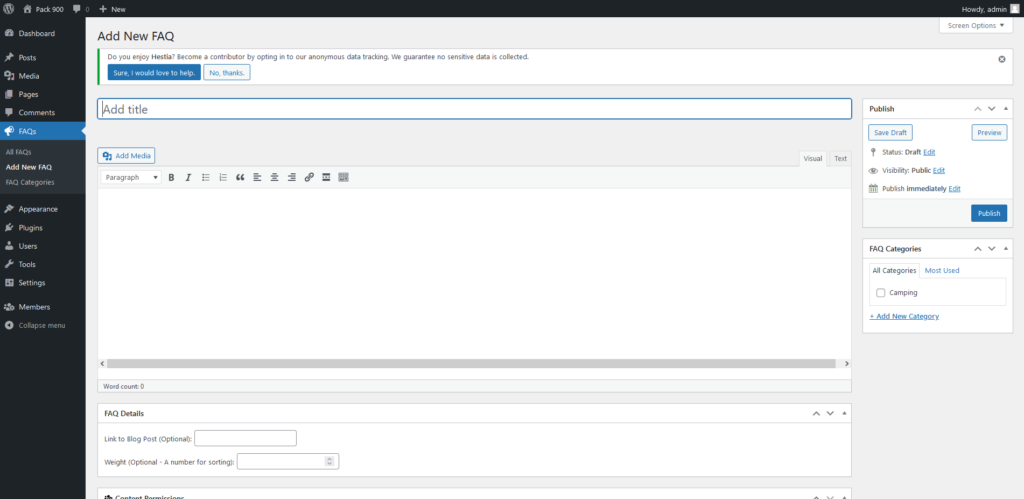
Furthermore, I implemented a categorization system for the FAQs. Imagine categories like “Pinewood Derby Questions,” “Camping Trip Logistics,” and so on. This categorization system empowers parents to quickly locate the information they seek. On the front-end user interface, the website displays the FAQs categorized, with uncategorized ones appearing first. Additionally, a user-friendly navigation bar, similar to what you see on Wikipedia, sits at the top of the page. This navigation bar allows users to jump directly to specific questions, saving them time.
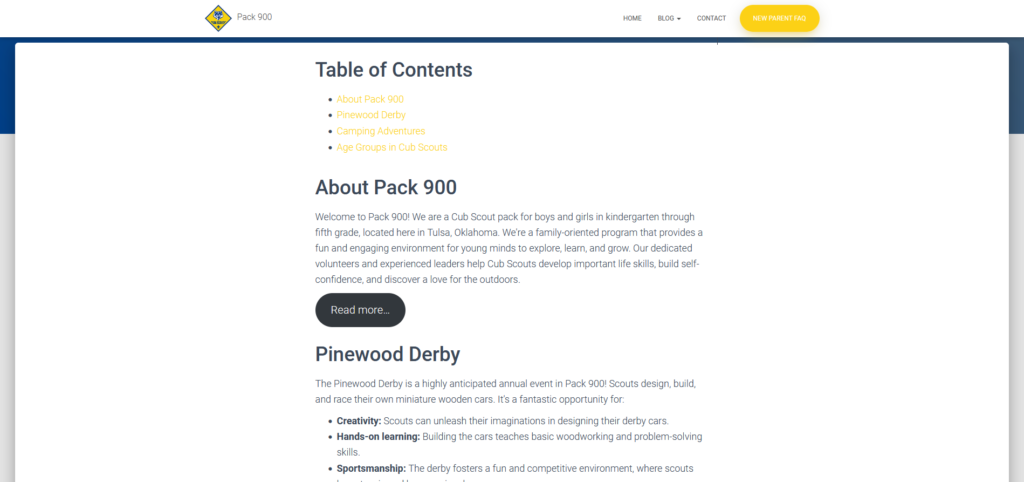
While building this custom content type wasn’t the most technically demanding task, it served as an exercise in extending WordPress’s functionality. More importantly, it ensures a user-friendly experience for both parents and whoever manages the website in the future.
Security Challenge: Leader Information
Now we come to the trickier aspect of this project: securing the leader information section. This section needs to be accessible only to authorized users, such as Den Leaders and pack administrators. Initially, I considered a rather straightforward approach: setting posts to “Private” under an “Administration” category. This seemed like a logical solution – private posts require a login to be viewed.
However, upon further consideration, a potential security concern arose. While setting posts to private would indeed require a login, it wouldn’t prevent someone with a basic understanding of WordPress from creating a default “Subscriber” account. This essentially creates a backdoor into the private section, something we absolutely cannot allow.
Clearly, this approach wouldn’t provide the level of security we need. To address this challenge, I started exploring WordPress plugins and user roles. Plugins allow you to extend the functionality of WordPress in various ways, and custom user roles enable you to create different user types with varying access permissions. For example, we could create custom roles called “Den Leader” and “Administrator” that would be the only ones to have access to the “Pack Administration” section. “Pack Updates” sections (if implemented) could also be created if we want to restrict access to the “Pack Updates” category.
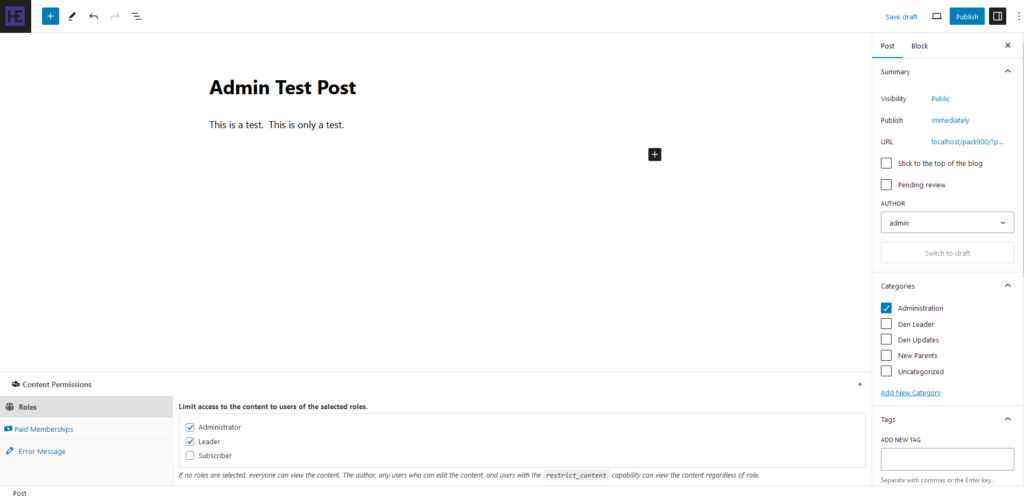
Conclusion on How I Organize WordPress Content
Building this Cub Scout website with WordPress has been a truly rewarding experience. There’s a certain satisfaction that comes from giving back to my son’s pack and creating a resource that benefits the entire Scouting community. The website empowers new parents with clear information, equips Den Leaders with valuable resources, and potentially keeps the entire pack informed (if the “Pack Updates” section is implemented). Most importantly, we’re on the right track to securing a dedicated space for leader information.
There are still some decisions to finalize and a few technical hurdles to overcome. However, this project has been a great exercise in how to organize WordPress content to create a website that serves a specific community. It’s important to remember that complexity wasn’t the goal here. The focus was entirely on user-friendliness – making the website easy for new parents to navigate and super easy for new leaders to maintain in the future.
Feel free to leave a comment below if you have any questions or suggestions about this project! I’d love to hear your thoughts.
